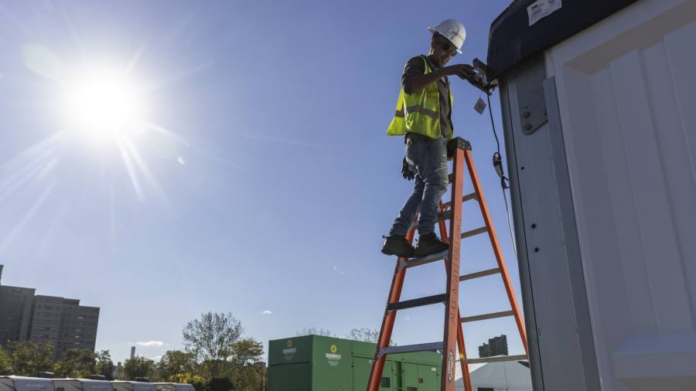The US economy rebounded in the third quarter after contracting for the first six months of this year, despite mounting evidence that the consumer is weakening as the Federal Reserve’s efforts to damp demand start to have an effect.
Gross domestic product increased 2.6 per cent on an annualised basis between July and September, according to the commerce department’s report released on Thursday. That surpassed economists’ expectations and marked a sharp reversal from the 0.6 per cent drop in the second quarter of 2022 and the 1.6 per cent decline registered in the first three months of the year.
The expansion in the third quarter was propelled by a narrowing of the trade deficit, as ebbing consumer demand damped imports while exports on the whole rose, thanks in part to sales from the oil sector. Ukraine war-related shortages have sparked unprecedented demand overseas for American petroleum products.
Those trade trends concealed a softening of domestic consumer demand that suggests the economy is losing strength, however. Consumer spending advanced just 1.4 per cent, according to the commerce department’s GDP report, which was higher than expected, but far slower than the previous period.
The most important proxy for underlying demand in the economy — final sales to domestic purchasers, excluding government spending — rose just 0.1 per cent. That is down from 0.5 per cent in the second quarter and 2.1 per cent in the first.
“This [GDP] number is weaker in terms of the signal it sends about the forward strength of the economy than the last one was, even though the headline was positive,” said Eric Winograd, director of developed market economic research at AllianceBernstein.
US stocks rose following the report, with the S&P 500 up 0.7 per cent in morning trading. The two-year Treasury yield, which moves with interest rate expectations, dropped to its lowest level in two weeks, suggesting investors did not view the figure as likely to push the Federal Reserve towards even tighter policy than what is expected.
The Fed is poised early next month to deliver its fourth consecutive 0.75 percentage point interest rate increase, which will lift its benchmark policy rate to a new target range of 3.75 per cent to 4 per cent. As recently as March, the federal funds rate hovered near zero, making this tightening campaign one of the most aggressive in the US central bank’s history.
Officials are beginning to consider when to slow the pace of their interest rate increases, given not only the amount of tightening they have already done but the fact that their policy adjustments take time to filter through the economy.
Interest rate-sensitive sectors such as housing have already weakened as mortgage rates have rocketed above 7 per cent, but other pockets of the economy continue to show signs of strength, most notably the labour market.
Combined with the nascent signs that consumer demand is softening in the latest GDP report, Winograd said: “It should give the Fed confidence that what they are doing is going to have an effect.”
“It should also give them reason to slow the pace of what they are doing so they can see what the effect is and minimise the risk of going too far,” he added.
As of last month, most officials thought the fed funds rate would peak at 4.6 per cent, but now investors expect it to close in on 5 per cent next year.
Given how large an impact the Fed’s actions are expected to have on economic growth and the labour market, most economists now expect the unemployment rate to rise materially from its current level of 3.5 per cent and for the economy to tip into a recession next year.
Top officials in the Biden administration maintain that the US economy is strong enough to avoid that outcome, citing the resilience of the labour market, but even Jay Powell, the Fed chair, has acknowledged the odds have risen.
“No one knows whether this process will lead to a recession or if so, how significant that recession would be,” he said at his last press conference in September.
A debate raged over the summer as to whether the US economy was already in a recession, given that two consecutive quarters of shrinking GDP has long been considered a common criteria for a “technical recession”. However at the time, top policymakers in the Biden administration and at the Federal Reserve pushed back on that framing, citing ample evidence that the economy was still on firm footing.
The official arbiters of a recession, a group of economists at the National Bureau of Economic Research, characterise one as a “significant decline in economic activity that is spread across the economy and lasts more than a few months”. They typically look at a range of metrics including monthly jobs growth, consumer spending on goods and services and industrial production.
Additional reporting by Kate Duguid in New York
Credit: Source link















